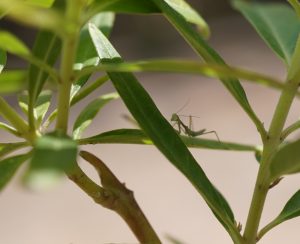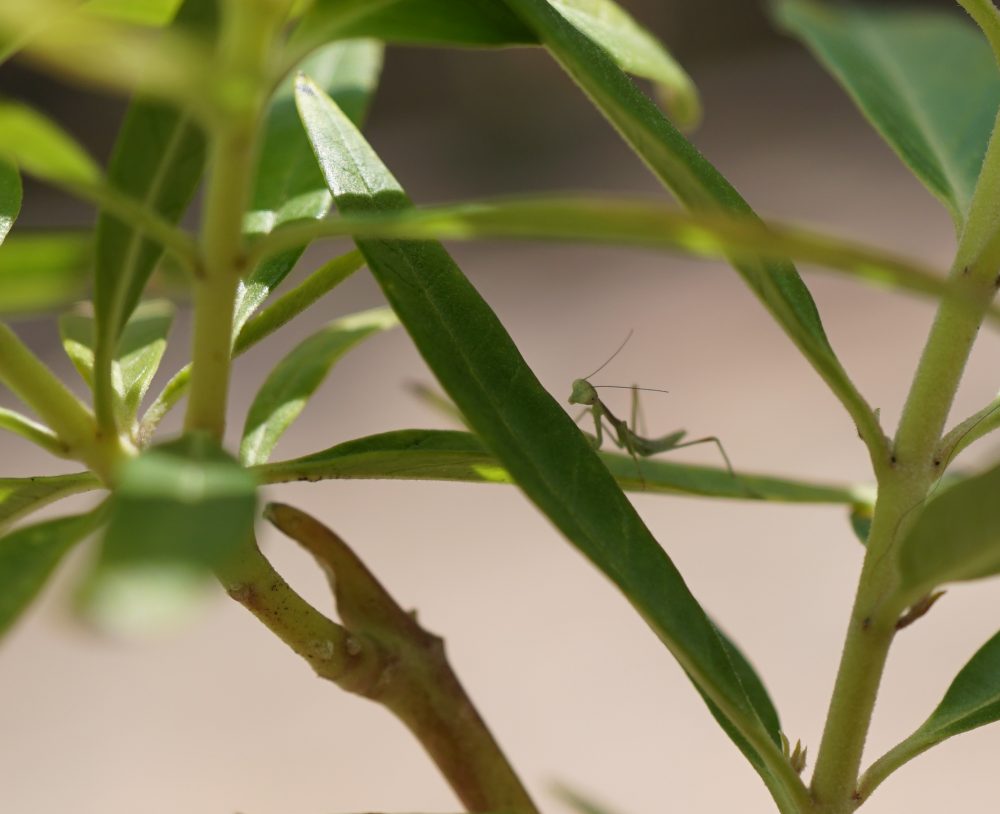In a recent post I wrote about a female praying mantis, probably of the species Stagmomantis limbata, that spent last summer stalking other insects from her camouflage perch on a balloon plant milkweed. In late summer, when she was about four inches long, this formidable apex predator among insects produced an ootheca, an egg case that hardened after a couple hours. The egg case remained “glued” to the stem and protected the eggs through the fall. The egg case is still there as we approach the first day of spring.
A couple days ago I was checking on the milkweed after a good rain when I noticed a praying mantis nymph on the egg case. Because an egg case can contain up to a couple hundred eggs, I examined the surrounding leaves and stems and counted two more nymphs.

Nymphs are nearly identical to adults. They molt up to ten times while they grow, but lack reproductive organs and wings until they emerge as adults after a final molt. My semi-macro camera did its best, but I could have used a true macro lens to capture this tiny critter.

